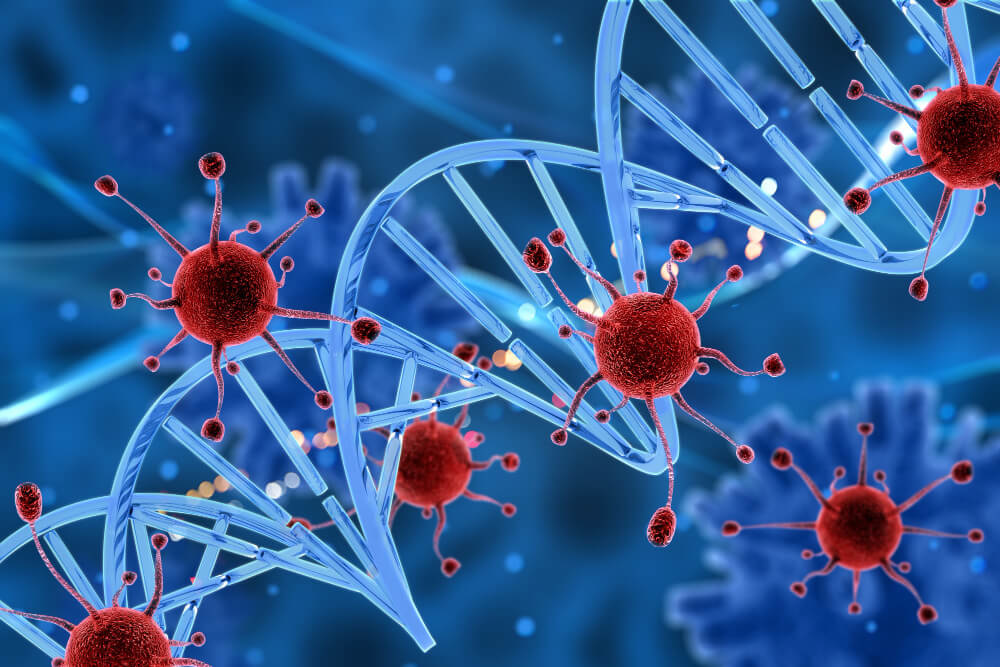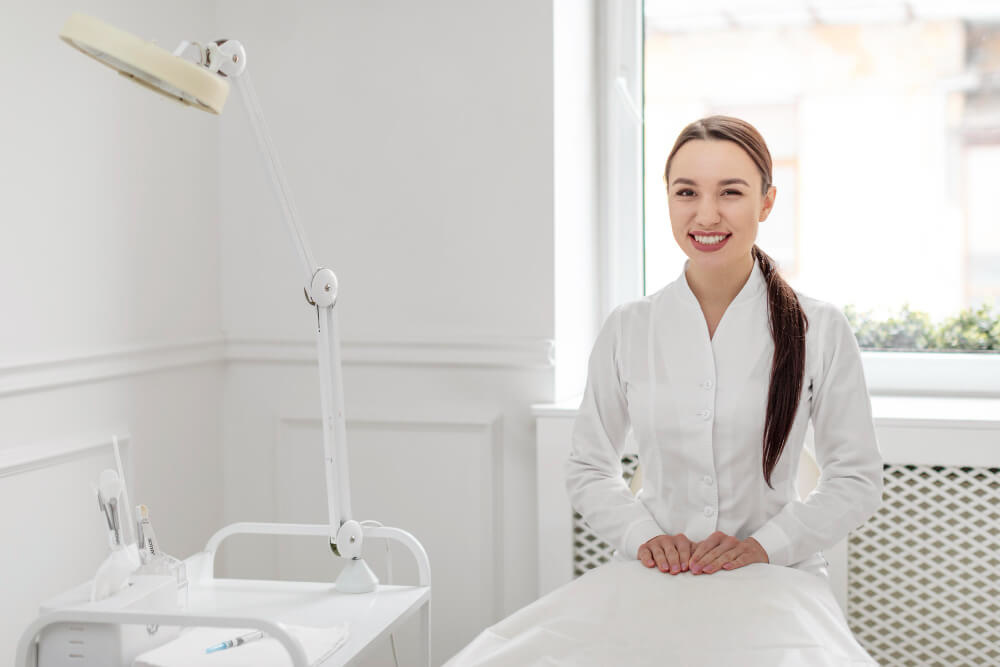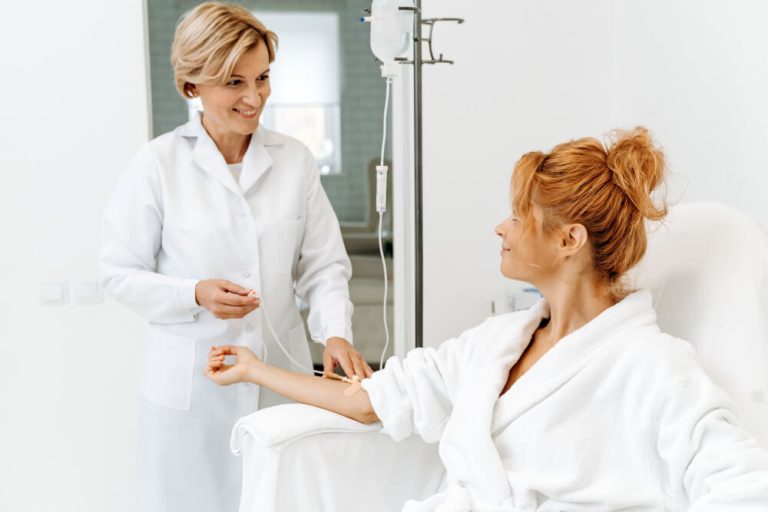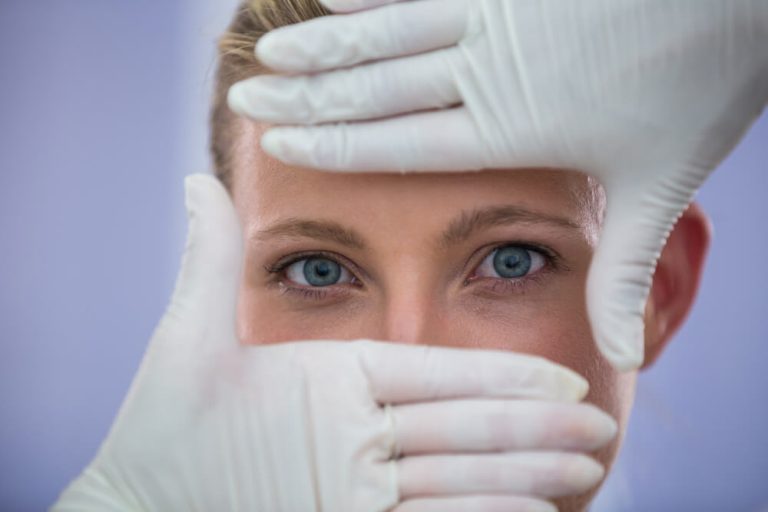Navigating the Change: A Complete Guide to Menopause Training
Menopause is a significant life transition, a biological milestone that every woman experiences differently. It is far more than the cessation of menstrual cycles or the occasional hot flash. This phase represents a profound hormonal and physiological shift that can impact everything from bone density and muscle mass to mood and cardiovascular health. For many, it can feel like navigating uncharted territory without a map, leading to confusion, frustration, and a sense of being disconnected from one’s own body.
Understanding and actively managing this transition is the key to not just surviving menopause, but thriving through it. This is where the concept of ‘menopause training’ becomes essential. This term encompasses a powerful, two-pronged approach. It refers to the physical training and lifestyle adjustments women can adopt to manage their symptoms and protect their long-term health. It also refers to the critical, specialized education that healthcare professionals need to provide effective, empathetic, and evidence-based care.
By embracing a comprehensive strategy that includes both personal wellness and expert medical guidance, women can reclaim control over their health journey. The right support system, built on knowledge and proactive care, can transform the menopausal experience. Equipping yourself and your healthcare provider with the best menopause training available is the first step toward a healthier, more vibrant future.

Why Does Exercise Matter So Much During Menopause?
During the menopausal transition, a decline in estrogen levels sets off a cascade of changes throughout the body. This single hormonal shift is responsible for many of the challenges women face. One of the most significant impacts is on body composition. The loss of estrogen can accelerate sarcopenia, the age-related decline in muscle mass, and simultaneously encourage the body to store more visceral fat, particularly around the abdomen.
This change in body composition isn’t just a cosmetic concern. Less muscle means a slower metabolism, making weight management more difficult. Increased visceral fat is a major risk factor for metabolic conditions like insulin resistance and type 2 diabetes. Furthermore, estrogen plays a vital role in maintaining bone density. As levels drop, the risk of osteoporosis, a condition that makes bones brittle and prone to fracture, increases dramatically.
This is why exercise transitions from being a ‘good idea’ to an absolute necessity. It is one of the most powerful tools available to counteract these physiological changes. Regular physical activity helps build and maintain muscle, which in turn boosts your metabolism and improves how your body uses insulin. Weight-bearing exercises place a healthy stress on your bones, signaling them to become stronger and denser. Beyond the physical, exercise is a proven mood booster and stress reducer, helping to manage the anxiety and mood swings that can accompany menopause.

What Are the Best Types of Exercise for Menopausal Symptoms?
There is no single ‘magic’ workout for menopause. Instead, the most effective approach is a well-rounded routine that incorporates different types of movement to address the various challenges of this life stage. A combination of strength training, cardiovascular exercise, and flexibility work creates a synergistic effect, supporting your body from every angle. The goal is to build a sustainable practice that you enjoy and can stick with for the long term.
Creating a balanced plan helps you feel stronger, more energetic, and more in control. It’s about finding activities that not only address your physical needs but also bring you a sense of accomplishment and well-being. Think of your workout routine as a personalized prescription for a healthier and happier menopause journey.

How Can Strength Training Help?
If you are going to prioritize one type of exercise during menopause, make it strength training. Also known as resistance training, this form of exercise involves using weights, resistance bands, or your own body weight to challenge your muscles. Its benefits are uniquely suited to combating the effects of hormonal changes. By building lean muscle mass, you directly counteract sarcopenia and give your metabolism a significant boost, as muscle tissue burns more calories at rest than fat tissue.
This metabolic advantage makes it easier to manage your weight and reduce the accumulation of harmful visceral fat. More importantly, strength training is a champion for bone health. Activities like squats, lunges, push-ups, and lifting weights put mechanical stress on your bones. This stress stimulates the cells responsible for bone formation, helping to slow bone loss and even increase bone density, which is your best defense against osteoporosis. Strength training also improves insulin sensitivity, reducing your risk for metabolic syndrome and type 2 diabetes.

Why is Cardiovascular Exercise Crucial?
Cardiovascular or aerobic exercise is essential for protecting your heart, which becomes more vulnerable after menopause. Estrogen has a protective effect on the cardiovascular system, helping to keep blood vessels flexible and manage cholesterol levels. With the decline of estrogen, the risk of heart disease and stroke rises. Regular cardio helps mitigate this risk by strengthening your heart muscle, improving circulation, and helping to maintain healthy blood pressure and cholesterol levels.
Beyond heart health, cardio is a powerful tool for weight management and mood regulation. Activities like brisk walking, jogging, cycling, swimming, or dancing elevate your heart rate, burning calories and helping to prevent weight gain. This type of movement also releases endorphins, the body’s natural mood elevators, which can be incredibly helpful for managing the anxiety, irritability, and depressive feelings that sometimes accompany menopause. You can find excellent exercise tips for menopause that provide guidance on getting started safely and effectively.

What About Flexibility and Balance?
Flexibility and balance exercises are the unsung heroes of a menopausal fitness routine. As we age, joints can become stiffer and muscles tighter, leading to aches, pains, and an increased risk of injury. Practices like yoga, Pilates, and regular stretching help maintain and improve your range of motion, keeping your body supple and reducing discomfort. A good menopause workout plan will almost always include dedicated time for stretching and mobility work.
These practices offer more than just physical benefits. The focus on breathwork and mindful movement in yoga and Pilates can be incredibly effective for stress reduction. This helps to lower cortisol levels, the body’s primary stress hormone, which can contribute to weight gain and mood disturbances when elevated. Furthermore, improving your balance is critical for preventing falls, which can have devastating consequences, especially if bone density is already compromised. Incorporating these exercises ensures your fitness plan is holistic and protective.

How Can You Create a Sustainable Menopause Workout Routine?
Knowing what to do is one thing; actually doing it consistently is another. The key to a successful fitness routine during menopause is sustainability. This isn’t the time for an ‘all or nothing’ approach that leads to burnout or injury. It’s about building healthy habits that integrate seamlessly into your life. If you’re new to exercise or returning after a long break, start slowly. Your body is adapting to many changes, so give it time to adjust to new physical demands.
Listen to your body. Some days you will feel energetic and strong, while others you may be fatigued or dealing with joint pain. It’s okay to adjust your workout intensity or choose a more restorative activity like stretching or a gentle walk on those days. The goal is consistency, not perfection. Aim for a mix of activities throughout the week, including two to three strength training sessions and 150 minutes of moderate-intensity cardio, as many experts recommend. You can explore some of the best exercises to do during menopause to find activities that appeal to you.
To stay motivated, find joy in movement. Choose activities you genuinely like, whether it’s dancing in your living room, hiking in nature, or joining a group fitness class. Working out with a friend can provide accountability and social connection. Remember to schedule rest days into your routine. Recovery is when your muscles repair and grow stronger, and it’s essential for preventing overtraining and fatigue. Understanding how exercise can specifically help with your symptoms and exercise challenges can also be a powerful motivator.

Why Do So Many Women Feel Unheard by Their Doctors?
While personal exercise and lifestyle choices are foundational, they are only one part of the equation. Navigating menopause effectively often requires professional medical support. Unfortunately, for far too long, many women have found this part of their journey to be incredibly frustrating. Countless stories exist of women whose legitimate symptoms were dismissed as simply signs of aging, stress, or even psychological issues.
This widespread issue stems from a historical gap in medical education. Menopause has not traditionally been a significant focus in medical schools or residency programs. As a result, many well-intentioned physicians lack the specialized, up-to-date knowledge required to diagnose and manage menopause confidently and effectively. They may be unfamiliar with the wide range of symptoms beyond hot flashes, or they may be hesitant to discuss treatments like hormone therapy due to outdated information.
This gap in knowledge leaves women feeling unheard, invalidated, and without a clear path forward. It forces them to become their own advocates, spending countless hours researching and trying to piece together a solution for their suffering. This underscores a critical need: the medical community must be better equipped with specialized training to serve this large and growing patient population.

What is Professional Menopause Training for Healthcare Providers?
Professional menopause training is a specialized form of continuing medical education designed to fill the knowledge gap left by traditional schooling. It provides healthcare professionals, including doctors, nurse practitioners, and physician assistants, with a deep and nuanced understanding of the menopausal transition. This goes far beyond a surface-level review of symptoms and treatments.
This advanced training covers the intricate endocrinology of perimenopause and menopause, exploring the complex interplay of hormones and their systemic effects on the body. It delves into the full spectrum of potential symptoms, from the well-known vasomotor symptoms to the more subtle cognitive, mood, and musculoskeletal changes. A key focus is on modern, evidence-based treatment protocols, including the safe and effective use of hormone replacement therapy (HRT), bioidentical hormones, and non-hormonal alternatives.
Crucially, high-quality training often incorporates a functional medicine perspective, teaching clinicians to look for the root causes of dysfunction and to create personalized treatment plans. These plans integrate lifestyle interventions, targeted nutritional support, and advanced diagnostics alongside conventional treatments. By participating in comprehensive CME courses on menopause management, providers can move beyond a one-size-fits-all approach and offer truly individualized care.

How Does Specialist Training Benefit General Practitioners (GPs)?
General practitioners are on the front lines of healthcare. For most women, their GP is the first and often only person they will consult about their menopausal symptoms. This places GPs in a pivotal role. When they are equipped with specialized knowledge, the entire patient experience can be transformed for the better.
With dedicated training, GPs can confidently recognize the varied and sometimes confusing presentations of menopause. They can differentiate symptoms from other potential medical conditions, ensuring an accurate diagnosis. This confidence allows them to initiate conversations about menopause proactively and to provide clear, reassuring, and accurate information to their patients, dispelling myths and fears.
Ultimately, this leads to better patient outcomes. A well-informed GP can co-create a comprehensive management plan that might include lifestyle counseling, prescribing appropriate hormone therapy, or referring to other specialists when necessary. This level of care fosters trust and empowers patients, making them feel seen and supported. Investing in menopause specialist training for GPs is one of the most effective ways to improve healthcare for women at midlife.

Why is Understanding Cardiometabolic Health So Important in Menopause?
The hormonal shifts of menopause have a profound impact on a woman’s cardiometabolic health. The decline in estrogen is directly linked to an increased risk for several serious conditions, including heart disease, stroke, and type 2 diabetes. This is because estrogen helps to regulate cholesterol, maintain the elasticity of blood vessels, and manage insulin sensitivity. As it wanes, women often see an unfavorable shift in their lipid profiles, an increase in blood pressure, and a greater tendency toward insulin resistance.
For this reason, managing menopause is intrinsically linked to managing long-term cardiovascular risk. A standard check-up might not capture the full picture of these underlying changes. This is where advanced diagnostic tools and the knowledge to interpret them become invaluable. A clinician trained in this area can look beyond a simple cholesterol number and assess a more detailed picture of a patient’s risk.
This involves looking at markers like lipoprotein particle size, inflammation levels, and advanced indicators of insulin resistance. Understanding these nuances allows for a much more proactive and personalized approach to prevention. It enables clinicians to recommend highly specific lifestyle, nutrition, and therapeutic interventions long before a clinical diagnosis of heart disease or diabetes would be made. Proper training for interpreting advanced cardiometabolic panels is a cornerstone of modern, preventative menopausal care.
Menopause training, in its dual sense, is the key to transforming this universal life stage from a period of uncertainty into an opportunity for empowerment. For women, it means using tools like targeted exercise to build a strong, resilient body capable of navigating the changes with grace and strength. For the medical community, it means embracing specialized education to provide the expert, compassionate care that every woman deserves.
This integrated approach ensures that no woman has to navigate this journey alone or without the best possible support. When individuals are empowered with knowledge about their own bodies, and clinicians are equipped with cutting-edge expertise, menopause ceases to be an endpoint and becomes a new beginning, a transition into a new phase of life defined by health, vitality, and well-being.
Frequently Asked Questions

How does a doctor differentiate perimenopause symptoms from other health conditions?
A clinician will begin by taking a thorough medical history, focusing on the pattern and timing of your symptoms in relation to your menstrual cycle. They will ask detailed questions about sleep disturbances, mood changes, and vasomotor symptoms like hot flashes to establish a clinical picture. This initial discussion is crucial for distinguishing the classic presentation of perimenopause from other potential issues.
To ensure an accurate diagnosis, your doctor will likely order blood tests to rule out other conditions that can mimic perimenopausal symptoms, such as thyroid disorders or anemia. While hormone level tests are not always definitive for diagnosing perimenopause due to their daily fluctuations, they are vital for excluding other medical causes. The final diagnosis is typically based on your age, characteristic symptoms, and the process of elimination.

What should I expect during my first clinical appointment to discuss perimenopause?
Your first appointment will be a comprehensive consultation designed to understand your specific health situation and symptoms. Be prepared to discuss your menstrual history in detail, including any changes in frequency or flow, as well as the nature of any hot flashes, sleep issues, or mood swings. It is helpful to bring a list of your questions and any current medications or supplements you are taking.
Following the discussion, your clinician may perform a physical exam and discuss if any diagnostic tests are necessary. This visit is a collaborative conversation aimed at gathering information and exploring your personal treatment goals and preferences. The primary objective is to establish a clear baseline to create a personalized and effective management plan.

If I’m not a candidate for hormone therapy, what are the most effective clinical alternatives?
For women who cannot or choose not to use systemic hormone therapy, there are several evidence-based clinical alternatives for managing symptoms. Non-hormonal prescription medications, such as low-dose antidepressants (SSRIs), have been proven effective in reducing the frequency and severity of hot flashes and improving mood. Other medications like gabapentin may also be prescribed specifically for vasomotor symptom relief.
Beyond pharmaceuticals, your clinician can recommend targeted strategies like cognitive-behavioral therapy (CBT) to help manage insomnia and anxiety associated with this transition. For bothersome vaginal dryness or discomfort, low-dose vaginal estrogen provides localized relief with minimal systemic absorption, making it a safe option for many. Your doctor will work with you to determine the most appropriate and effective non-hormonal approach for your specific needs.
Discover the most comprehensive functional medicine training, longevity training, and biohacking certification programs designed specifically for healthcare professionals, medics, and clinic owners who want to master regenerative medicine protocols and anti-aging therapies.







